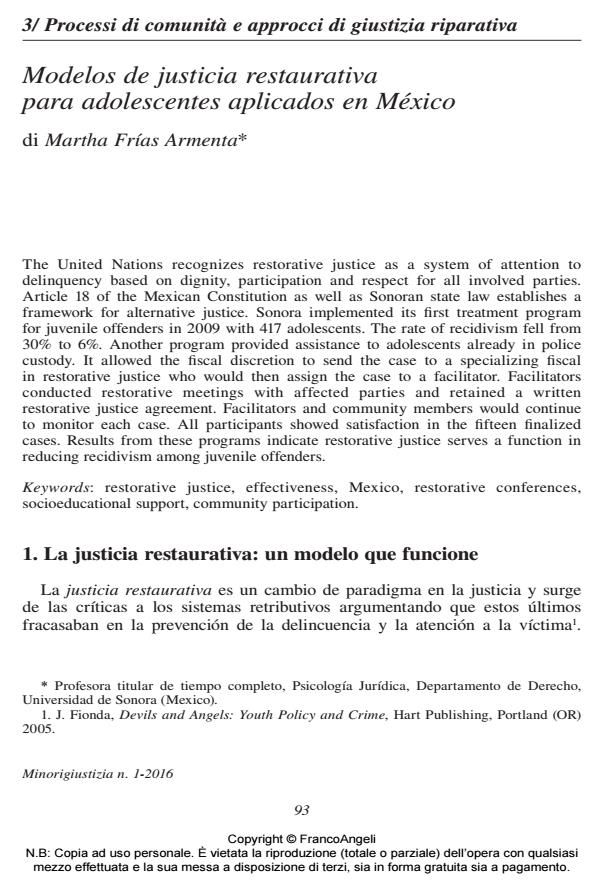Modelos de justicia restaurativa para adolescentes aplicados en México
Journal title MINORIGIUSTIZIA
Author/s Armenta Martha Frías
Publishing Year 2016 Issue 2016/1
Language Spanish Pages 9 P. 93-101 File size 85 KB
DOI 10.3280/MG2016-001011
DOI is like a bar code for intellectual property: to have more infomation
click here
Below, you can see the article first page
If you want to buy this article in PDF format, you can do it, following the instructions to buy download credits

FrancoAngeli is member of Publishers International Linking Association, Inc (PILA), a not-for-profit association which run the CrossRef service enabling links to and from online scholarly content.
The United Nations recognizes restorative justice as a system of attention to delinquency based on dignity, participation and respect for all involved parties. Article 18 of the Mexican Constitution as well as Sonoran state law establishes a framework for alternative justice. Sonora implemented its first treatment program for juvenile offenders in 2009 with 417 adolescents. The rate of recidivism fell from 30% to 6%. Another program provided assistance to adolescents already in police custody. It allowed the fiscal discretion to send the case to a specializing fiscal in restorative justice who would then assign the case to a facilitator. Facilitators conducted restorative meetings with affected parties and retained a written restorative justice agreement. Facilitators and community members would continue to monitor each case. All participants showed satisfaction in the fifteen finalized cases. Results from these programs indicate restorative justice serves a function in reducing recidivism among juvenile offenders.
Keywords: Restorative justice, effectiveness, Mexico, restorative conferences, socioeducational support, community participation
Armenta Martha Frías, Modelos de justicia restaurativa para adolescentes aplicados en México in "MINORIGIUSTIZIA" 1/2016, pp 93-101, DOI: 10.3280/MG2016-001011